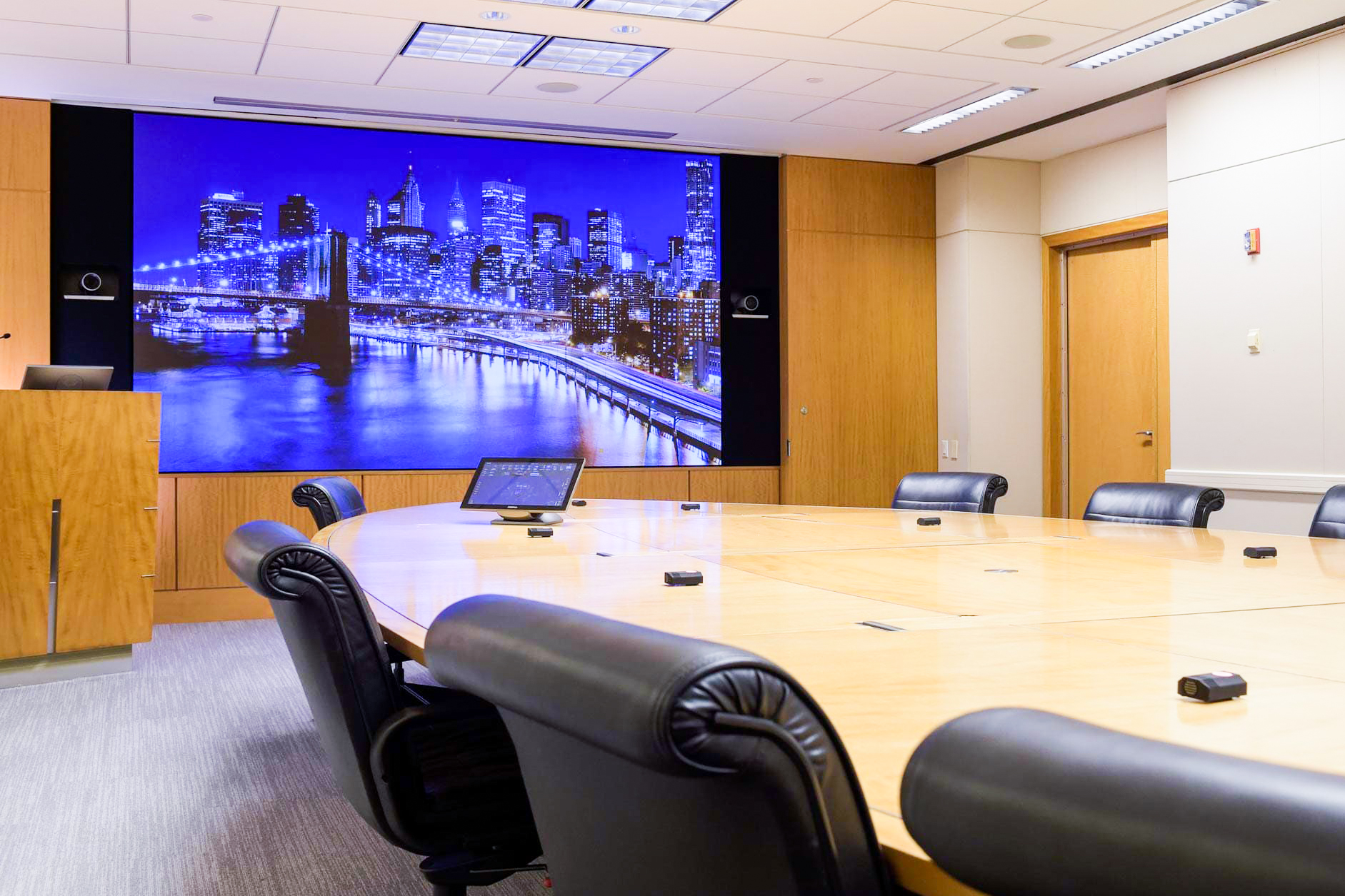Here To Help You ProtecT Your
Healthcare Facility
Thompson Electronics Company provides Illinois hospitals, short-term and long-term care facilities, nursing homes, and healthcare clinics with custom-engineered solutions for nurse call, audiovisual, security, mass communication, and fire alarm systems.
How We Protect Healthcare Facilities
Thompson Electronics Company has a team of professionals to ensure your projects are handled with care. We provide our clients with exactly what they need and work with healthcare facilities of all sizes.
Nurse Call
We provide nurse call systems to healthcare facilities throughout Illinois. These systems are vital for delivering high-quality, timely care ensuring patient safety, enhancing staff efficiency, and maintaining compliance.
Audiovisual
We provide audiovisual systems that are integrated with your business in mind. Each client’s unique needs are considered for every project while providing a volunteer-friendly, reliable solution.
Security
Our security systems consist of access control, video surveillance, intrusion detection, and monitoring. These systems help protect people, assests, and property 24/7.
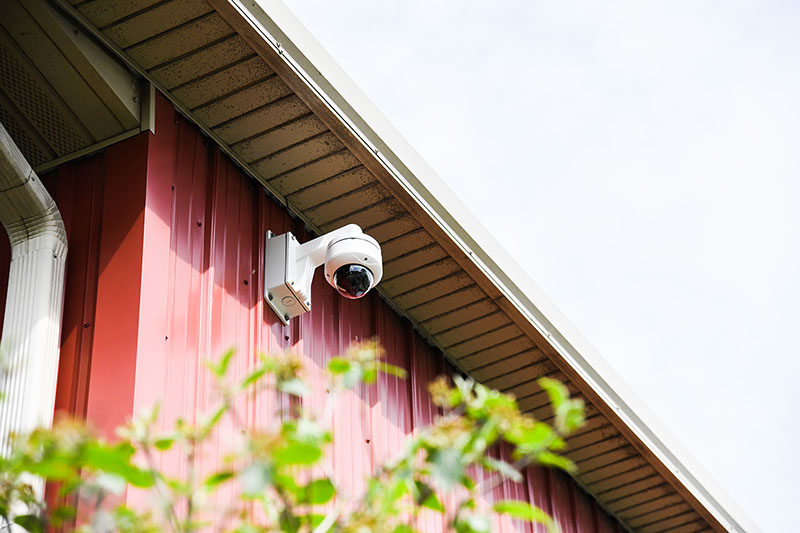
Fire Alarm
We design and install fire alarm systems to keep all occupants safe during an emergency. We also administer fire alarm inspections that are up to NFPA standards. Inspections are scheduled in advance and always completed on time.
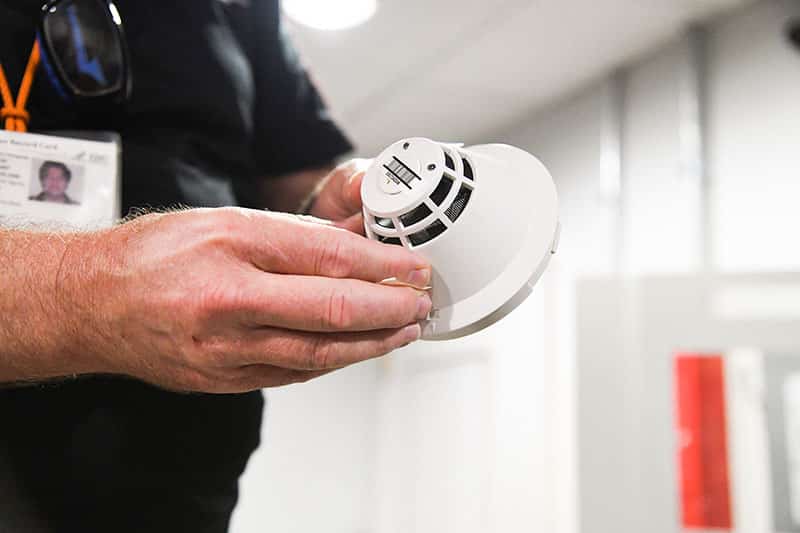
Mass Communication
We offer mass communication systems, like synchronized clocks, speakers, and PA systems, and mass notification systems, to alert the proper authorities in an emergency or if there’s potential danger.
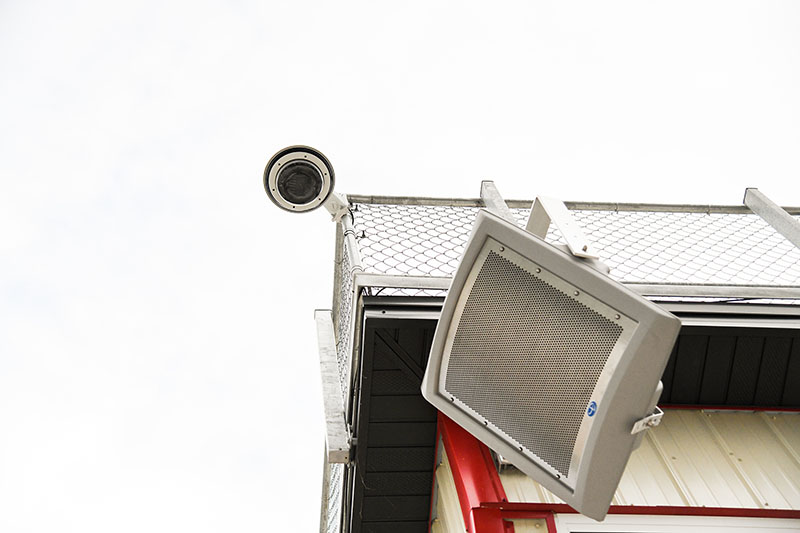
Why Healthcare Facilities Should Have Nurse Call Systems
Improve Patient Safety
Nurse call systems enable patients to easily request help, preventing medical emergencies from escalating. This is particularly important for patients who may have limited mobility or are in critical conditions.
Enhances Response Times
By notifying nurses directly and allowing them to prioritize requests based on urgency, nurse call systems ensure that patients receive timely care, reducing the risk of complications, falls, or delayed treatment.
Boost Staff Efficiency
With features like call prioritization and integration with communication devices, nurse call systems streamline workflows, allowing nurses to focus on the most pressing needs without unnecessary back-and-forth.
Facilitates Care Coordination
Integrated nurse call systems help coordinate care across different departments, ensuring that the right personnel are notified and involved when a situation arises. This results in better patient management and care delivery.
Promotes Patient Satisfaction
Fast and efficient responses to patient needs enhance the overall patient experience, making them feel well cared for and secure. This leads to better satisfaction scores and improved patient outcomes.
Supports Compliance and Legal Requirements
In many regions, nurse call systems are required by law for patient safety. These systems help facilities comply with healthcare regulations and avoid legal risks related to delayed or insufficient care.
Reduces Risk of Falls and Emergencies
Features like bed exit alarms and bathroom call buttons minimize the likelihood of patient falls, a significant risk in healthcare facilities. These alerts ensure that assistance is provided when patients are most vulnerable.
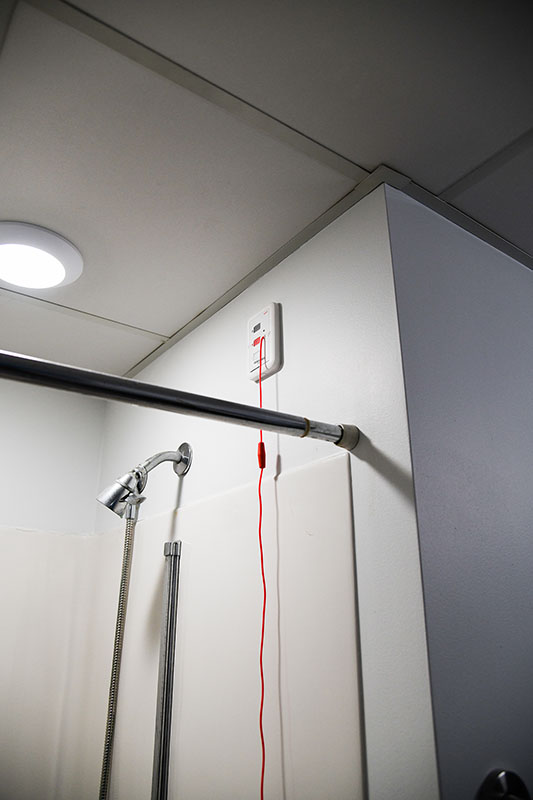
Important Features of Nurse Call Systems
Patient-to-Nurse Communication
- Call Buttons: Located at the patient’s bedside, these allow patients to easily alert nurses when they need assistance. Quick access to help is crucial for patient safety and well-being.
- Two-Way Audio/Video Communication: Enables direct communication between the patient and nursing staff. This helps nurses assess the patient’s needs before arriving, allowing them to bring necessary equipment or prepare for emergencies.
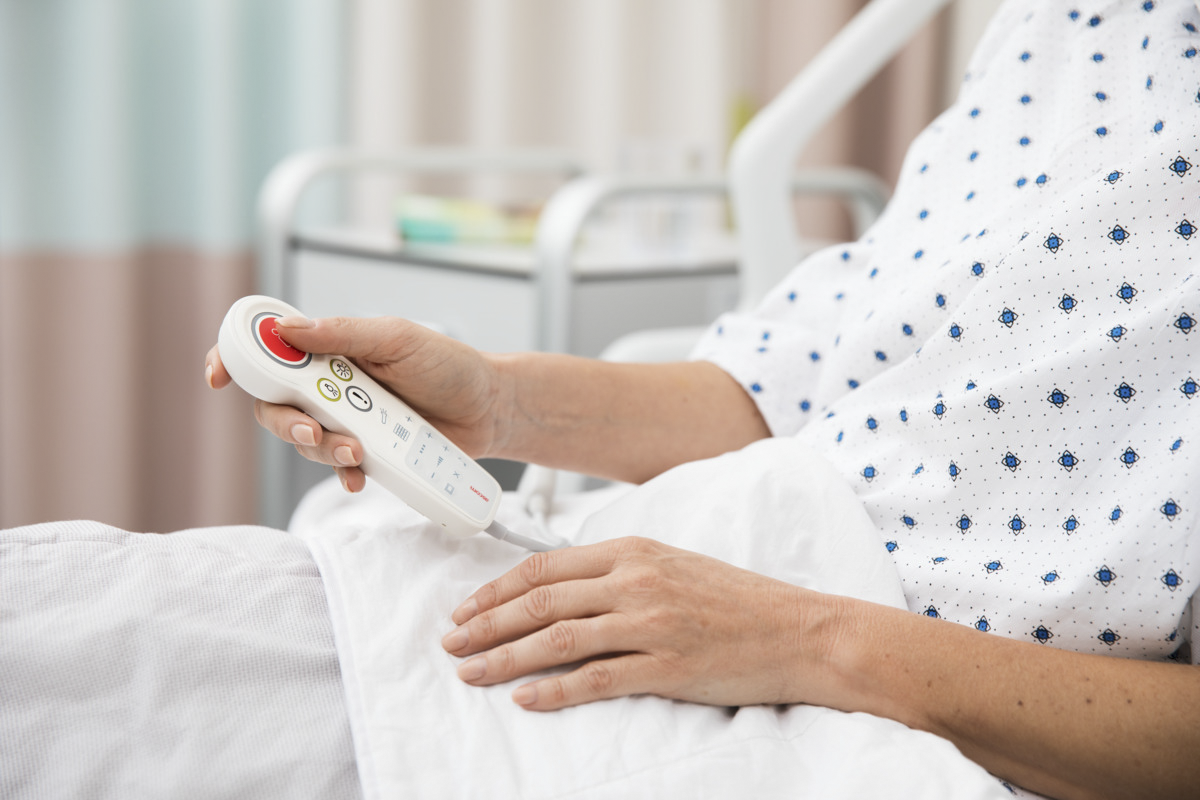
Wireless Capabilities
- Mobile Accessibility: Wireless nurse call systems allow nurses to respond to patient requests even when they are not near a fixed station, improving response times and flexibility.
- Wearable Devices: Some systems use wearable devices for patients and staff to send alerts or track movements, increasing real-time monitoring capabilities.
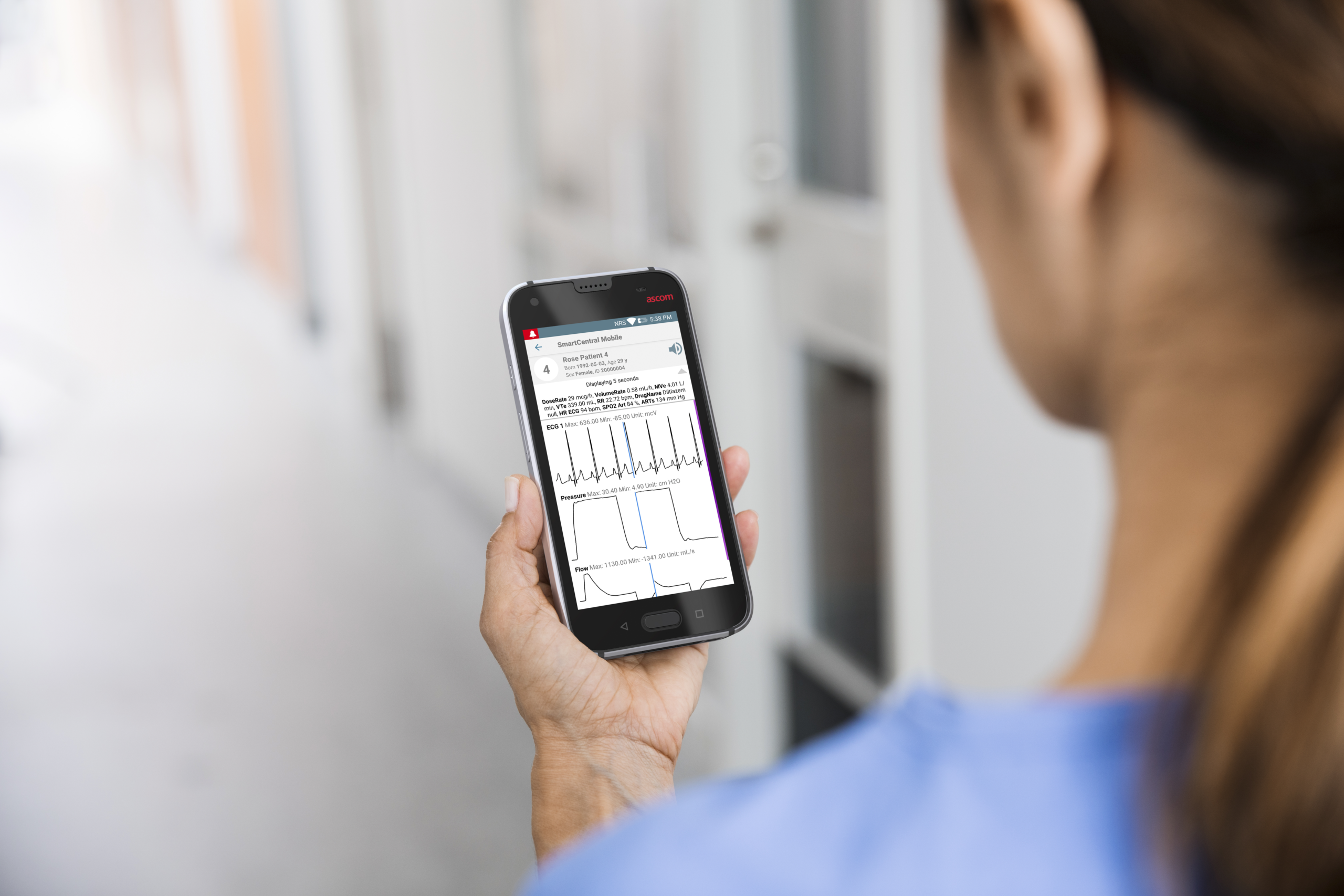
Emergency Call Functionality
- Priority Alerts: Nurse call systems often differentiate between regular requests (e.g., needing water) and emergency calls (e.g., fall detection or cardiac arrest). This allows staff to prioritize urgent situations.
- Code Blue or Critical Alerts: Specialized buttons can trigger specific alerts like a “Code Blue” for cardiac arrest, ensuring rapid, coordinated responses from medical teams.
Integration with Other Hostpital Systems
- Integration with Electronic Health Records (EHR): Some nurse call systems can be integrated with EHRs, allowing nurses to document care activities or patient interactions directly into the system, reducing duplication and enhancing workflow.
- Integration with Paging/Phone Systems: Alerts from nurse call systems can be routed to pagers, mobile phones, or other devices so that nurses can receive notifications regardless of their location in the facility.
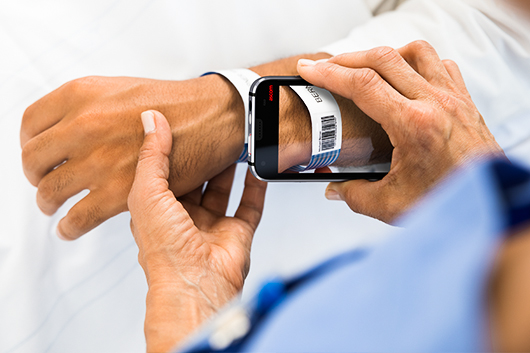
Fall Prevention and Monitoring
- Bed Exit Alarms: Sensors in beds or chairs can trigger an alert if a patient attempts to get up unassisted, helping prevent falls, especially in patients with mobility issues.
- Bathroom Alarms: Patients can request assistance while using the bathroom, an area where falls are more likely to occur.
Tracking and Reporting
- Response Time Tracking: Records how quickly staff respond to patient requests, providing valuable data for performance monitoring and improving service quality.
- Shift Assignment Management: Some systems allow you to assign calls to specific staff based on shifts or patient rooms, ensuring more efficient handling of tasks.
Audiovisual Solutions
Healthcare facilities can leverage audiovisual systems to enhance workflow efficiency, improve patient outcomes, and streamline communication.
Enhancing Communication and Coordination
- Telemedicine/Telehealth Integration: AV systems enable real-time video consultations between patients and healthcare providers, improving access to care, particularly for remote or bedridden patients. This reduces the need for in-person visits, speeding up diagnosis and treatment.
- Real-time Communication Between Departments: AV systems facilitate instant video and audio communication between healthcare teams across different departments or even different locations. This improves coordination, especially during emergencies or when consultations are required with specialists.

Supporting Surgery and Medical Procedures
- Video-Assisted Surgery: AV systems in operating rooms (OR) allow surgeons to view high-definition images and videos in real-time, aiding in minimally invasive procedures. This improves precision, reduces errors, and enhances patient outcomes.
- Remote Guidance and Supervision: Experts can supervise or guide surgical procedures remotely, using AV systems to provide insights to in-house surgeons, which improves the quality of care without requiring specialists to be physically present.
Patient Rounding and Tele-ICU
- Virtual Rounds: AV systems allow physicians and specialists to conduct virtual patient rounds, reducing the time spent physically moving between rooms. This also allows multiple specialists to join rounds without needing to be physically present, enabling faster multidisciplinary care.
- Tele-ICU: AV systems are integral to tele-ICU setups where remote healthcare professionals monitor critically ill patients 24/7, providing advice and intervening when needed. This enhances care for ICU patients and reduces the workload for on-site staff.

Facility-Wide Information Sharing
- Digital Signage and Announcements: AV systems can display real-time information like patient schedules, emergency alerts, or workflow changes on screens throughout the facility. This ensures that staff and patients are well-informed, improving overall efficiency and reducing miscommunication.
- Wayfinding: Large healthcare facilities can use AV systems for digital wayfinding to help patients and visitors navigate the building. This reduces delays and helps patients arrive at appointments on time.
Facilitating Patient and Family Communication
- Virtual Visits: AV systems allow patients to connect with their families via video calls, especially when in-person visits are restricted (such as during pandemics). This helps improve patient morale, contributing to better mental health and recovery outcomes.
- Care Coordination with Family Members: Family members can participate in consultations.
Improving Staff Workflow and Efficiency
- Centralized Monitoring: Facilities can use AV systems for remote monitoring of multiple patients in different rooms, reducing the need for constant physical checks. Cameras and audio systems allow nurses to monitor vital signs, patient activity, and safety.
- Virtual Meetings and Training: Staff training, team meetings, or case discussions can be conducted via AV systems, saving time and allowing more frequent educational opportunities without needing physical gathering spaces.
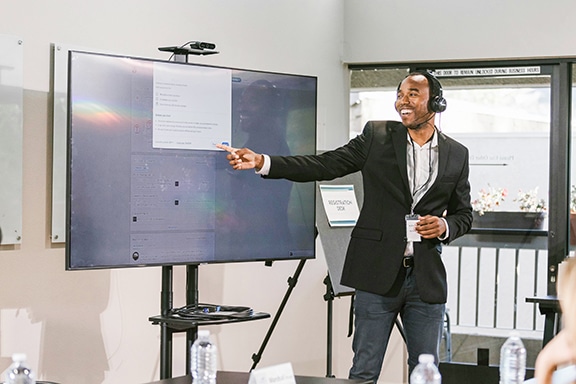
Patient Education and Engagement
- Interactive Patient Rooms: AV systems in patient rooms can be used to deliver personalized educational content, helping patients understand their diagnosis, treatment plans, and recovery process. This engagement enhances patient compliance and health outcomes.
- Patient Entertainment and Mental Health Support: AV systems can offer entertainment or calming content (e.g., relaxing videos or music) to reduce patient stress and anxiety. This is especially beneficial for patients in long-term care or those with mental health conditions.
Improving Emergency Response
- Instant Alerts and Communication: AV systems can trigger real-time audiovisual alerts for emergencies like cardiac arrests or patient falls. This ensures that healthcare teams are immediately informed and can respond faster, potentially saving lives.
- Visual Communication in Noisy Environments: In areas where noise may interfere with audio communication (like ICUs or operating rooms), AV systems with visual cues (lights, screen messages) ensure that critical information is relayed without interruption.
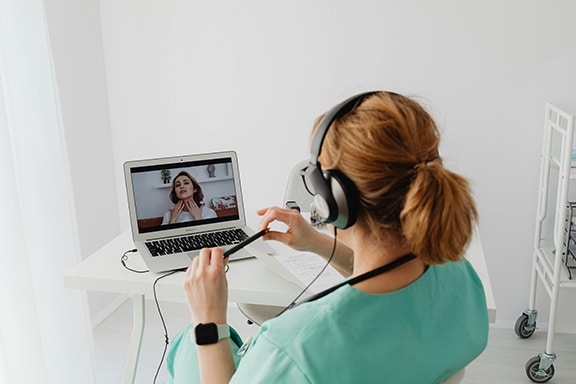
Improving Documentation and Record Keeping
- Recording Procedures for Training and Review: AV systems can record surgeries, medical procedures, or patient consultations for future review, quality assurance, or staff training. This allows healthcare providers to learn from previous cases and improve future patient outcomes.
- Automated Documentation: In some cases, AV systems can assist in automatically documenting patient interactions, reducing the administrative burden on healthcare workers and allowing them to focus more on patient care.
Security Systems
Implementing a security system in a healthcare facility is critical because it enhances patient safety, supports efficient care delivery, and ensures the security of both patients and staff.
Patient Safety and Well Being
Security Systems help prevent unauthorized access to sensitive areas like operating rooms, medication storage, and patient wards. This reduces the risk of harm to patients from intruders or theft of vital medical supplies.
Rapid Response to Emergencies
Security Systems, including surveillance cameras and alarms, help detect and respond to incidents such as patient elopement (when a patient leaves without authorization), violent behavior, or other emergencies that require immediate attention.
Improved Workflow and Efficiency
Security Systems enable real-time monitoring of facility entrances and exits, helping staff focus on patient care without worrying about the facility’s safety. It also assists in managing visitor access, which is important for infection control and patient privacy.
Legal and Regulatory Compliance
Security systems contribute to meeting healthcare regulations and safety standards. Nurse call systems are often required by law to ensure patient safety, while security systems help facilities comply with privacy laws like HIPAA by safeguarding patient information and ensuring safe environments.
Staff and Patient Protection
Security systems protect healthcare workers from potential threats, including physical violence from patients or visitors, which is increasingly important given the rising incidents of workplace violence in healthcare settings.
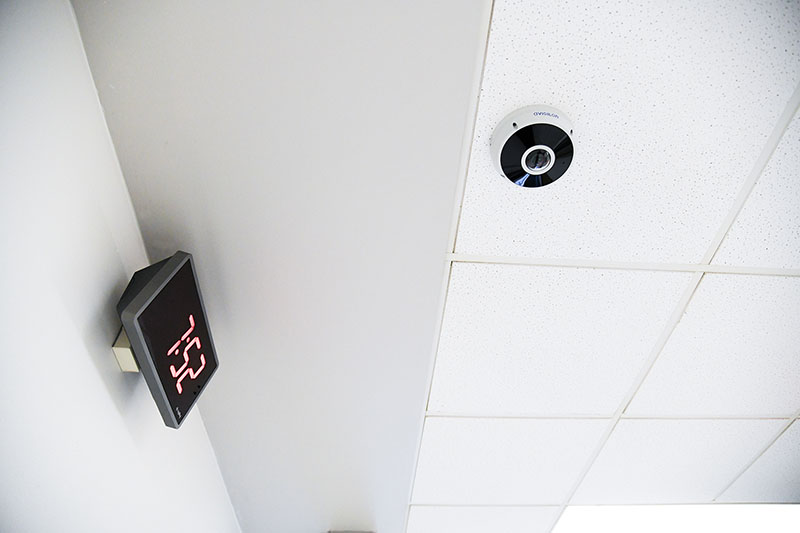
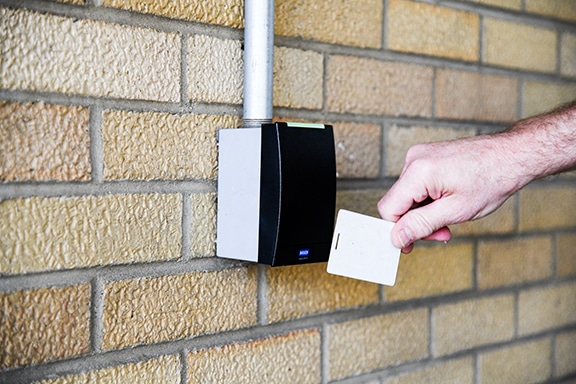
Fire Alarm Systems
A fire alarm system is critically important in a hospital or healthcare facility due to the unique challenges and risks posed in those environments.
Patient Safety
- Vulnerable Populations: Hospitals house patients who may be immobile, unconscious, or unable to evacuate on their own. A fire alarm system ensures that staff is quickly alerted to begin safe evacuation and protect vulnerable patients.
- Quick Detection and Response: Early detection of smoke or fire can prevent the spread of a fire, allowing for timely action to evacuate patients and contain the situation before it escalates.
Continuous Monitoring
Hospitals operate 24/7, and fire risks can occur at any time. A fire alarm system provides continuous monitoring, ensuring that any signs of fire or smoke are detected and addressed promptly, even during off-hours or when staff is limited.
Compliance with Regulations
- Fire alarm systems are often mandated by healthcare regulations and building codes. These systems ensure compliance with safety standards set by organizations such as the Joint Commission, the National Fire Protection Association (NFPA), and local fire codes.
- Failure to have a functioning fire alarm system can lead to severe penalties, legal consequences, and risks to the facility’s accreditation.
Minimizes Downtime and Service Disruption
Early detection and containment of fires reduce the extent of damage, ensuring that hospital services can resume more quickly after an incident. This is crucial for healthcare facilities, as even brief downtime can significantly impact patient care and outcomes.
Minimizes Risk to Life and Property
- Evacuation Procedures: A hospital must be able to quickly evacuate or secure certain areas during a fire emergency. A fire alarm system triggers necessary safety protocols, enabling staff to move patients out of danger zones.
- Protects Expensive Equipment: Hospitals house costly medical equipment and sensitive data that would be difficult to replace. A robust fire alarm system helps minimize damage by enabling a rapid response.
Supports Emergency Planning
- Coordinated Response: Fire alarm systems can be integrated with other emergency systems, such as sprinklers, ventilation shutdowns, and communication systems, allowing for a coordinated and comprehensive response to a fire.
- Helps Guide Firefighters: Fire alarm systems often have features like floor plans and alarm points that help firefighters quickly assess where the fire is located, improving response time and effectiveness in managing the emergency.
Integration with Other Safety Systems
Fire alarm systems are often linked to other safety systems, such as sprinkler systems, HVAC systems, and emergency lighting. This ensures that multiple layers of defense are activated simultaneously, reducing the spread of fire and providing safe exit routes for everyone in the building.
Reduces Chaos and Panic
- Orderly Evacuation: Audible alarms and visual signals from the fire alarm system help guide staff, patients, and visitors during an emergency, ensuring an orderly evacuation. This reduces the chances of panic, which can lead to injuries or worsen the situation.
- Staff Preparedness: With regular fire drills and alarms, staff becomes familiar with evacuation protocols, ensuring that they know what to do in an actual emergency.
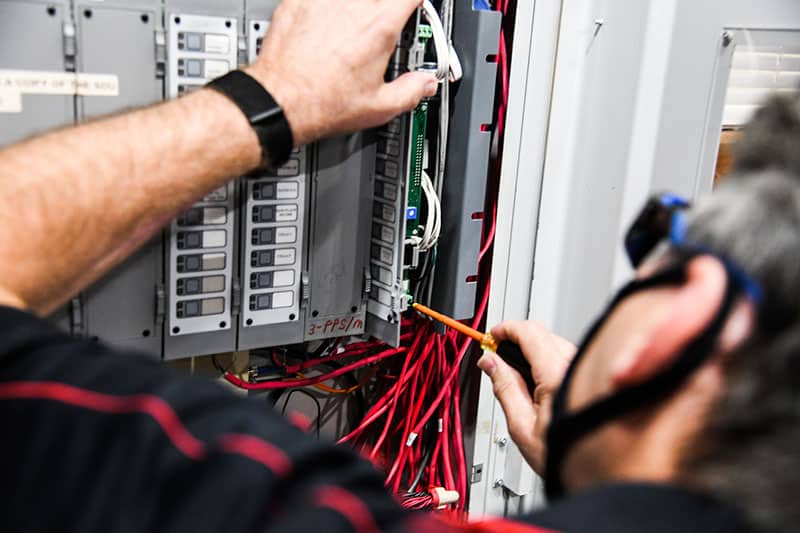
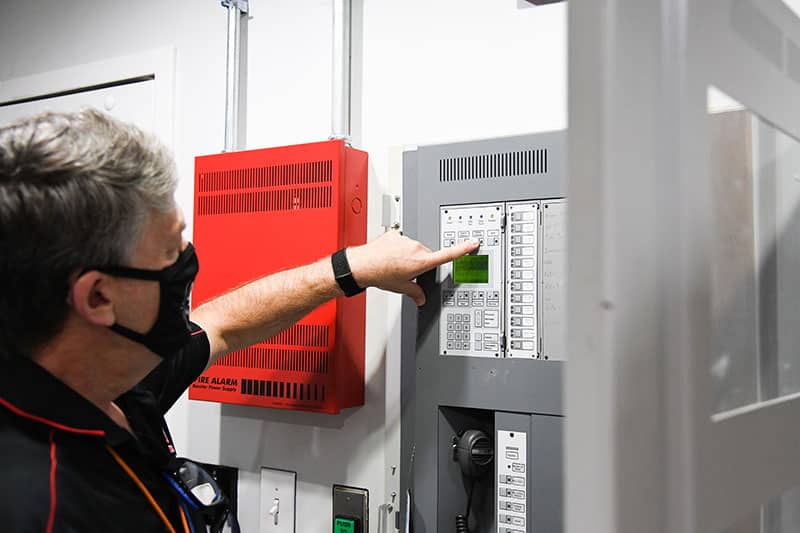
Mass Communication and Mass Notification
Mass communication and mass notification systems are critical in healthcare facilities ensuring safety, operational efficiency, and effective communication during routine and emergency situations.
Rapid Emergency Response
- Immediate Dissemination of Critical Information: In the event of an emergency, such as a fire, active shooter situation, severe weather, or medical crisis, mass notification systems (MNS) allow for instant communication to all staff, patients, and visitors. This ensures everyone is informed of the situation and can take appropriate actions, such as evacuating, sheltering in place, or following other safety protocols.
- Targeted Messaging: Mass notification systems can send targeted alerts to specific groups (e.g., doctors, nurses, security personnel) based on the nature of the emergency, ensuring the right people receive the right instructions without overwhelming those who don’t need immediate action.
Patient Safety and Wellbeing
- Clear Instructions During Evacuations: In emergencies that require evacuation, such as fires or natural disasters, mass communication systems provide real-time instructions to safely guide patients (many of whom may be immobile or in critical conditions) and staff out of the danger zone.
- Alerts for Medical Emergencies: In cases of urgent medical needs like a “Code Blue” or mass casualty events, mass notification systems enable fast and coordinated responses by notifying medical teams and mobilizing resources quickly.
Operational Efficiency
- Coordinating Staff During Routine Operations: Healthcare facilities are large, complex environments with staff spread across different departments, wings, and floors. Mass communication systems allow administrators to quickly update all personnel on important operational information, such as shift changes, policy updates, or staff shortages.
- Effective Internal Communication: Daily operations, such as patient transfers, room availability, or equipment needs, can be efficiently communicated across the facility using mass communication systems, ensuring smooth workflow and reducing delays in care.
Crisis and Incident Management
- Managing Public Health Crises: In pandemics or large-scale public health events, mass notification systems can communicate safety protocols, testing requirements, quarantine updates, and other crucial information across the facility. This was particularly important during the COVID-19 pandemic.
- Lockdown or Shelter-in-Place Orders: In situations where the facility needs to be locked down (e.g., due to security threats), mass notification systems ensure that all individuals within the facility are informed quickly and can take appropriate action to protect themselves.
Regulatory Compliance
- Meeting Safety and Communication Standards: Many healthcare regulations, including those set by organizations like the Joint Commission and OSHA, require robust communication systems to ensure patient and staff safety. Mass notification systems help facilities comply with these standards by enabling rapid dissemination of information and ensuring that everyone in the facility can be reached in case of an emergency.
- Documenting Responses: Many mass communication systems allow healthcare administrators to document the time, content, and recipients of messages, which can be critical for post-event evaluations, compliance reporting, and continuous improvement of safety protocols.
Reducing Confusion and Panic
- Clear, Consistent Messaging: In emergency situations, confusion and misinformation can exacerbate the problem. Mass communication systems deliver clear, consistent messaging across multiple channels (e.g., text messages, public announcements, email, digital displays) to ensure everyone receives accurate information simultaneously, reducing panic and promoting calm responses.
- Multi-Channel Communication: These systems can disseminate messages via different platforms—mobile phones, public address systems, digital signage, email, and even social media—ensuring that all audiences (staff, patients, visitors) are reached regardless of where they are or their preferred method of communication.
Visitor and Public Communication
- Managing External Visitors: Hospitals often have large numbers of visitors, vendors, and external contractors. Mass communication systems help manage their movements, especially during emergencies, by providing clear instructions on what actions to take or areas to avoid.
- Public Announcements: In cases of external incidents that impact hospital operations (e.g., hazardous material spills, external threats, or weather-related closures), mass notification systems can communicate important updates to the public, family members of patients, and others.
Business Continuity and Facility Operations
- Coordinating Disaster Recovery Efforts: After an emergency, mass communication systems help coordinate the recovery process, including organizing resources, communicating timelines for reopening affected areas, and managing logistics for resuming operations.
- Reducing Downtime: By streamlining communication during both emergencies and routine operations, mass notification systems help minimize downtime, allowing healthcare facilities to maintain patient care services with as little disruption as possible.
Real-Time Feedback and Situational Awareness
- Gathering Staff Responses: Some mass communication systems allow for two-way communication, enabling staff to confirm receipt of alerts or provide real-time updates about conditions in their areas. This improves situational awareness for leadership teams and helps them better manage the incident.
- Monitoring and Adjusting Emergency Responses: Administrators can monitor the effectiveness of mass notifications in real-time, adjusting messaging or response strategies as needed to ensure that everyone remains safe and informed.
Training and Preparedness
- Conducting Drills and Training Exercises: Mass communication systems are crucial for running safety drills, such as fire evacuations or active shooter scenarios. They provide structured, real-time communication during drills, ensuring staff are well-prepared for actual emergencies.
- Staff Readiness: By using mass notification systems to regularly update staff on emergency procedures or conduct simulated scenarios, healthcare facilities can ensure staff remain prepared and confident in handling various emergencies.
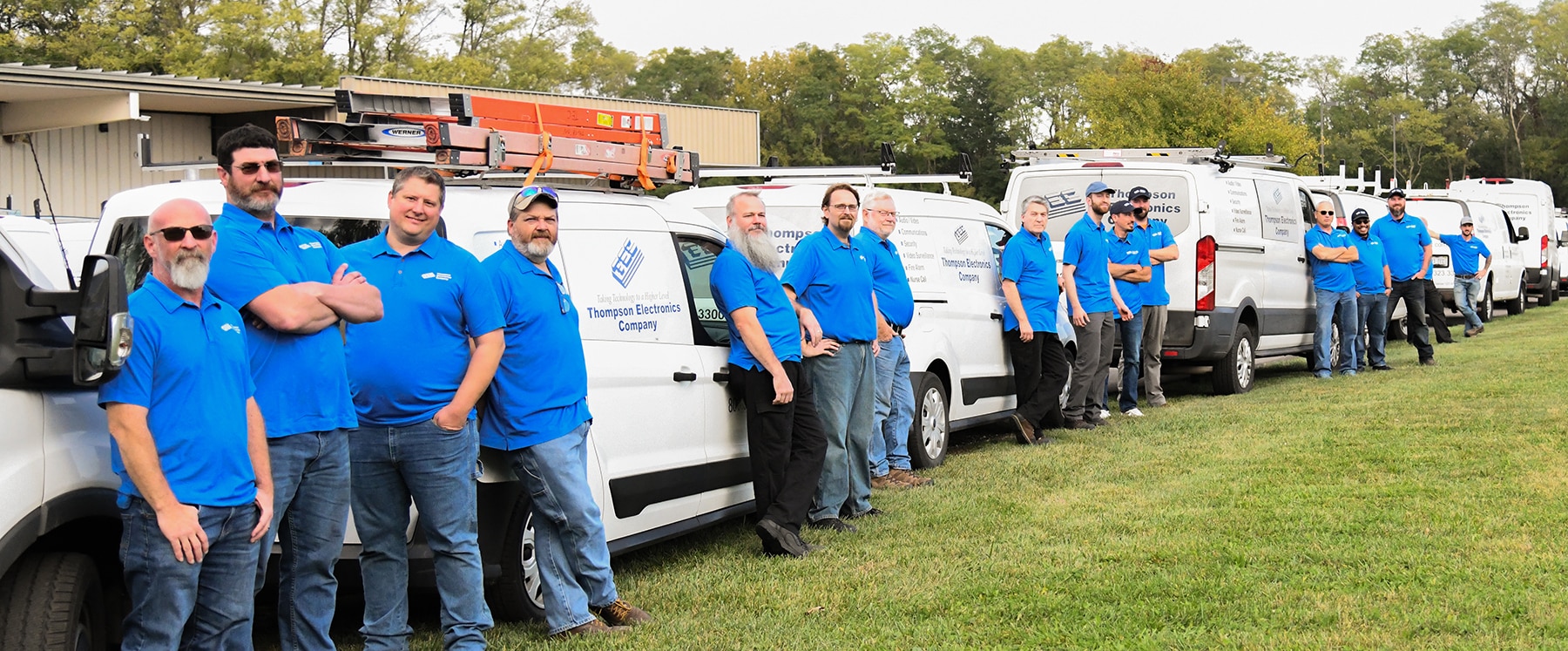
You’re Backed By Experts
Our technicians are fully insured, bonded, and registered with the State of Illinois Department of Professional Regulation. Each one of our techs goes through extensive training and has years of on-the-job experience. You can trust the Thompson Team.
Real Customer Reviews
“Thompson Electronics was recommended to us by our contractor. We have enjoyed working with TEC and the new fire system is reliable and makes us feel very safe.”
“Thompson Electronics installed our new fire alarm monitoring system in a timely manner to ensure the project to rehabilitate our new street maintenance facility remained on schedule. Following the installation, the Thompson Electronics staff have been helpful and responded quickly to questions about the new system.”
“It has been a pleasure working with TEC technician, Alan. He is knowledgeable and easy to work with. Our lives have been made easier for troubleshooting and campus wide issues.”


